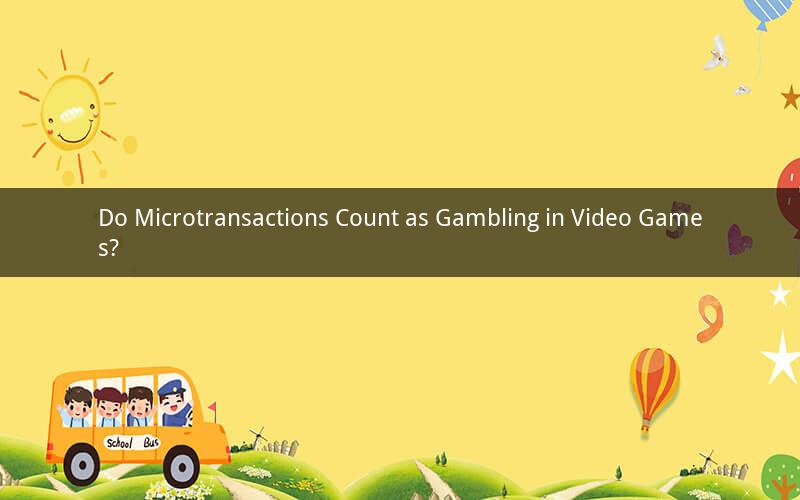
Introduction:
In recent years, the gaming industry has seen a significant rise in microtransactions, which are small payments made by players to purchase in-game items or services. This has sparked a debate on whether these microtransactions can be classified as gambling. In this article, we will explore the concept of microtransactions, their similarities and differences with gambling, and the potential risks associated with them.
1. What are Microtransactions?
Microtransactions are small purchases made within a video game that allow players to buy in-game items or services. These items can range from cosmetic changes, such as skins or emotes, to in-game currency or power-ups. The main purpose of microtransactions is to provide players with additional options and customization, enhancing their gaming experience.
2. Similarities between Microtransactions and Gambling
While microtransactions and gambling may seem like two distinct concepts, there are several similarities that raise concerns:
a. Chance: Both microtransactions and gambling involve an element of chance. In microtransactions, players may be purchasing items with random attributes or rarity, similar to the concept of a slot machine. This creates a sense of unpredictability and excitement, which can be reminiscent of gambling.
b. Risk of Financial Loss: Both microtransactions and gambling carry the risk of financial loss. Players may spend money on microtransactions with the hope of obtaining valuable items, but there is no guarantee of success. Similarly, gamblers may lose money in the hopes of winning more, often leading to a cycle of spending.
c. Addictive Potential: Both microtransactions and gambling have the potential to be addictive. The thrill of the chase, the possibility of winning big, and the social aspect of gaming or gambling can lead to excessive spending and time investment.
3. Differences between Microtransactions and Gambling
Despite the similarities, there are important differences between microtransactions and gambling:
a. Legal Status: Microtransactions are generally legal within the gaming industry, as long as they are transparent and not targeted at minors. Gambling, on the other hand, is regulated and prohibited in many countries due to its potential for harm.
b. Purpose: The primary purpose of microtransactions is to enhance the gaming experience and provide additional options, while the main purpose of gambling is to win money or prizes.
c. Randomness: Microtransactions often involve a degree of randomness, but it is usually controlled by the game developers to ensure a fair and balanced experience. In gambling, the element of randomness is often controlled by chance or luck.
4. Potential Risks of Microtransactions
While microtransactions can enhance the gaming experience, there are potential risks associated with them:
a. Financial Dependency: Players may become overly dependent on microtransactions to progress or enhance their gaming experience, leading to excessive spending and financial strain.
b. Social and Psychological Impact: Excessive microtransaction use can lead to social isolation and mental health issues, as players may become fixated on the pursuit of in-game rewards.
c. Exploitation: Some developers may exploit the addictive nature of microtransactions by creating games that encourage excessive spending, leading to financial and psychological harm.
5. Conclusion
In conclusion, while microtransactions and gambling share some similarities, they also have distinct differences. While microtransactions can enhance the gaming experience, it is important for players to be aware of the potential risks and maintain a healthy balance between spending and gaming. As the gaming industry continues to evolve, it is crucial for developers and regulators to address these concerns and ensure the well-being of players.
Questions and Answers:
1. Q: Can microtransactions lead to gambling addiction?
A: Yes, microtransactions can have an addictive potential, as they involve an element of chance and the thrill of the chase. However, it is important to note that not all players will develop an addiction.
2. Q: Are all microtransactions considered gambling?
A: No, not all microtransactions are considered gambling. While some microtransactions may involve an element of chance, others are simply cosmetic or provide additional gameplay options.
3. Q: Can microtransactions be regulated?
A: Yes, microtransactions can be regulated by governments and gaming authorities. Regulations can include age restrictions, transparency requirements, and measures to prevent excessive spending.
4. Q: Are microtransactions a good way to make money for game developers?
A: Microtransactions can be a lucrative source of revenue for game developers, as they allow for continuous revenue streams and provide players with additional options. However, it is important for developers to balance profit with player satisfaction and well-being.
5. Q: Can microtransactions improve the gaming experience?
A: Yes, microtransactions can enhance the gaming experience by providing additional options, customization, and rewards. However, it is important for players to be mindful of their spending and not rely solely on microtransactions for a fulfilling gaming experience.